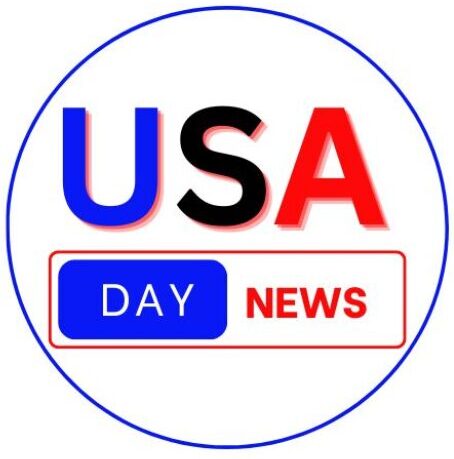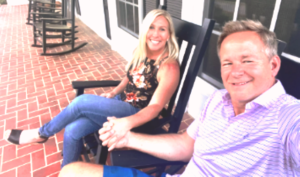Chasing the Aurora Where to See the Northern Lights in the United States
Chasing the Aurora Where to See the Northern Lights in the United States: There’s something absolutely magical about watching the northern lights dance across the night sky. Also known as the aurora borealis, these glowing ribbons of green, purple, and pink are like nature’s most breathtaking light show. While you might think you have to travel to the Arctic Circle to catch them, the truth is, you can actually spot them in several places right here in the United States if you know when and where to look.
Let’s take a journey through some U.S. states where the northern lights occasionally make an appearance, and how you can increase your chances of seeing this rare phenomenon.
Alaska The Best Bet in the U.S.
If there’s one U.S. state that offers a front-row seat to the aurora borealis, it’s Alaska. The long winter nights, low light pollution, and northern location make it ideal.
Fairbanks is considered the go-to spot. In fact, it’s located right under the “auroral oval” a ring-shaped zone where auroras are most frequently seen. Between August and April, you’ve got a strong chance of catching a show.
Tip: Head to Cleary Summit or Murphy Dome for stunning views away from the city lights.
Minnesota Aurora Chasing in the North Star State
Minnesota’s northern wilderness offers great opportunities to witness the northern lights, especially during strong solar activity.
Voyageurs National Park and the Boundary Waters Canoe Area Wilderness are both amazing dark-sky locations with minimal light pollution. The best time to catch the lights here is from September to March, especially on cold, clear nights.
Michigan A Hidden Gem for Northern Lights
Northern Michigan is an underrated destination for aurora hunters. Head up to the Upper Peninsula, where there are dark skies and wide-open horizons.
Headlands International Dark Sky Park in Mackinaw City is one of the few official Dark Sky Parks in the U.S. and a perfect place to camp out under the stars and hope for a glimpse of green and purple lights.
Montana Big Sky Country, Big Light Shows
Montana’s nickname “Big Sky Country” couldn’t be more fitting when it comes to viewing the northern lights. The wide, open spaces and lack of light pollution make for perfect conditions.
Glacier National Park and the Yaak Valley are two prime spots to consider. Look north and keep your fingers crossed on nights when solar activity spikes.
North Dakota Wide Open and Wonderfully Quiet
North Dakota often flies under the radar when people talk about auroras, but it shouldn’t. Thanks to its flat landscape and low population, it offers big, uninterrupted views of the sky.
Try areas like Theodore Roosevelt National Park or the rural outskirts of Grand Forks. Just step outside on a clear winter night and look up.
Wisconsin Northern Lights by the Lakes
While Wisconsin may not be as far north as Alaska or Montana, it still gets in on the aurora actionespecially during periods of high geomagnetic activity.
Apostle Islands National Lakeshore and Bayfield Peninsula offer some of the darkest skies in the state. When the conditions are right, you might just see those green streaks dancing over Lake Superior.
Maine East Coast Aurora Adventures
Yes, even the East Coast can get in on the action! Northern Maine offers some solid aurora viewing during strong solar storms.
Aroostook County, near the Canadian border, and Baxter State Park are top picks. You’ll need a clear sky and a little luck, but the reward is incredible.
Washington West Coast Glimpses
It’s not a frequent occurrence, but northern lights do sometimes make it as far west as Washington state, especially in areas far from city lights.
North Cascades National Park and Mount Baker-Snoqualmie National Forest offer high elevation and low light pollution just what you need for a possible sighting.
Oregon Rare, But Not Impossible
Oregon isn’t the most likely state for aurora sightings, but on those rare, high-activity nights, people have reported seeing faint northern lights in the far northern part of the state.
If you’re near the Wallowa Mountains or the Blue Mountains, keep an eye out. It’s not common, but it’s not impossible either.
Idaho Quiet and Beautiful
Northern Idaho, especially areas like Priest Lake and Sandpoint, can get some beautiful aurora activity during solar storms. Its mountainous terrain and remote nature mean the skies are dark enough to give you a good shot at seeing the glow.
How to Maximize Your Chances of Seeing the Northern Lights
- Check Aurora Forecasts: Websites like NOAA’s Space Weather Prediction Center and apps like My Aurora Forecast can alert you when conditions are favorable.
- Go Far North: The higher the latitude, the better the chances.
- Find Dark Skies: Avoid city lights. National parks and remote areas are your best bet.
- Be Patient and Dress Warm: You might need to wait for hours in the cold. Bring warm clothes, snacks, and maybe even a sleeping bag or blanket.
- Watch the Weather: Clear skies are essential. Cloudy nights will ruin your chances, no matter how active the aurora is.
Chasing the Aurora Where to See the Northern Lights in the United States
Chasing the northern lights in the U.S. can be an unforgettable experience. While Alaska gives you the best odds, states like Minnesota, Michigan, and Montana can also put on a great show. You don’t have to go all the way to Iceland or Norway just a little planning, a little patience, and a whole lot of luck might be all you need to catch this magical show right here in the States. So, grab your coat, head north, and keep your eyes on the sky!
FAQs
1. What time of year is best to see the northern lights in the U.S.?
The best time is from late September to early April, when nights are longest and skies are darkest.
2. Can I see the northern lights with the naked eye?
Yes, but they may appear as a greenish-white glow. Cameras often pick up more vibrant colors than the human eye can see.
3. Do I need special equipment to view the aurora?
Not at all! Just your eyes and a good location. Though a camera on long exposure can help capture the lights better.
4. How far south can the northern lights be seen in the U.S.?
During very strong geomagnetic storms, they can reach as far south as Illinois or even Kentucky, but that’s rare.
5. Are there any apps to help track aurora sightings?
Yes! Apps like “My Aurora Forecast” and “Aurora Alerts” are great tools to get real-time predictions.




